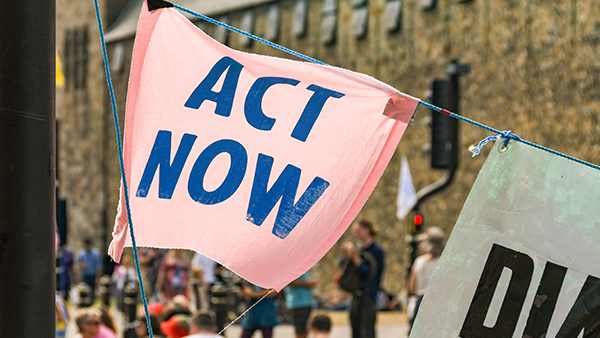Our ability to achieve what we want, especially in organisations and especially as leaders, depends on engaging three different perspectives. In this and subsequent posts I will describe those perspectives, explore them more deeply as archetypes and explain why it is challenging to engage all three in ways that are mutually complementary.
Efficacy (our ability to achieve what we want effectively) can be usefully seen to come in three forms. ‘Efficacy one’ is focused primarily on discrete, easily definable goals. The factors that will determine whether we will complete these goals lie (or at least appear to lie) largely within our control. That these goals seem relatively straightforward does not mean that achieving them is easy; even when we do succeed we often fail to do it in the most efficacious way.
Sir Michael Barber is a world expert in the hard skills of efficacy one. He honed his skills under PM Tony Blair in the Number Ten delivery unit and is now applying them as a consultant to a growing number of delivery units in jurisdictions around the world, and in his role as chief education advisor to the global education corporation Pearson. As Michael’s books illustrate, delivering a goal such as reducing waiting times in A & E or improving measures of literacy and numeracy among primary school pupils involves a lot more than command and control.
Efficacy one involves, among other things, being clear about the change you want to achieve and then setting targets that are stretching and attainable. It involves assessing and growing the capacity of organisations in the delivery chain to make their necessary contribution, and getting the people in that chain to buy in to the change. It requires putting in place systems to monitor progress and, if necessary, adapting both goals and the methods if things are going wrong. And it involves evaluating the success of change processes, ensuring as far as possible that hard won progress won’t be lost when the change is complete, as well as learning useful lessons.
People who think that too many leaders use ‘efficacy one’ tools to solve ‘efficacy two’ (see below) challenges have a self-serving tendency to underestimate how hard efficacy one is to do (I was somewhat guilty of this in a recent RSA Journal piece). Many organisations for much of the time are poor at efficacy one. While the public sector has to respond to the demands of accountability and the private sector to the imperatives of competition, the third sector often fails to get in place even the basics of efficacy one.
‘Efficacy two’ is about achieving progress towards more complex goals, ones where defining the route to success is harder or where success will only ever be partial or contested. The means to deliver efficacy two goals – think for example of tackling obesity, reducing inequality or modernizing a country or city – do not lie within the purview of one leader or agency. Goals and means have to be continually renegotiated and delivery depends hugely on collaboration. The focus of efficacy two is therefore the system (often one with fuzzy boundaries) that has to change to enable the desired outcomes.
Peter Senge and colleagues are among many people who have sought to define the core competences for efficacy two. Senge suggest three:
An ability to see the whole system in which change needs to take place
An ability to draw the relevant stakeholders into a constructive and creative conversation, and
An ability to move beyond reacting to circumstances to co-create a compelling but realistic vision of the future
Efficacy one, like efficacy two, is tough to get right. Arguably the not-for-profit sector, because of its idealism and adaptability, is better at efficacy two thinking, although by definition no agency can deliver such change on its own.
While efficacy one and two represent different ways of diagnosing and treating a problem (and different ways of defining a successful intervention), this doesn’t mean the two approaches can’t be complementary, indeed quite the reverse. Often it is by trying to implement efficacy one change that we get an insight into the systemic nature of the problems we face. This might be because we fail or perhaps because we succeed in achieving the output but not the ultimate outcome of change (for example, exam results might get better but children’s underlying capacity to learn and thrive might not, one form of environmentally damaging behaviour might be reduced indirectly causing another to increase).
Equally, one vital result of effective system leadership will be an agreement between agencies to break a problem into efficacy one-shaped change programmes. Big cultural change often needs a simple initial success to provide people with a sense of agency.
Leaders need the skills of efficacy one and efficacy two and the ability to distinguish between the circumstances in which one or other is the right way of approaching change. Efficacy one may require us to stick to our guns when others are doubting us, while efficacy two may require us to share doubt despite a clamor for certainty.
Which brings me to efficacy three, the dimension that far too to often gets overlooked. This is domain of self-management. As the plethora of self-help manuals in book stores attests, being effective is hard, and being an effective leader is even harder. Efficacy three requires us to critically self examine our motives and methods and to renew our sense of purpose when it is flagging. It requires us to keep our knowledge, skills and assumptions up to date. It is important that we attend to our physical, psychological (and spiritual) wellbeing. It demands that we are systematically challenged and supported by people who understand our world and who we trust and respect. And it requires the wisdom and stoicism to recognise that none of us are indispensible and that one measure of great leadership is that things continue to go well when you’re gone and are half way to being forgotten.
If we are lacking in efficacy one, two or three we will at best under-perform and at worst fail in our goals and make ourselves and other people miserable along the way. But while we need all three perspectives and skill sets they aren’t easy to combine – for reasons I will explore in later posts.
Take the example of the General Election campaign: It seems to be dominated by efficacy one thinking. Every day the parties promise to deliver better outcomes through this or that intervention. Arguably the reason most of this – however carefully tested and calibrated - bounces off us is that we know the world is more complicated than the simple cause and effect, right and wrong, universe presented in politicians’ speeches. What matters more to us – although it is almost never fully articulated by the parties – is their efficacy two thinking; what kind of system do they want to create and what role do they want us to play in that system.
And, of course, in the relative popularity of the leaders themselves lies efficacy three concerns – which of these people do we think has the vision, skills, self-awareness, humility to cope with the ever growing demands of modern political leadership.
For some reasons Michael Barber’s books don’t dwell on the Number Ten Delivery unit’s commitment to reduce poppy cultivation in Afghanistan! That goal is a farcical example of Tony Blair’s tragic folly in approaching the incredibly complex efficacy two task of bringing Western style modernisation to Iraq and Afghanistan as reducible to a set of efficacy one delivery objectives. Yet – as today’s speech attests - despite everything, the former PM still has the power to engage us.
What I suspect we like about Blair is his self- assurance, his belief that not only is he right but that any sensible person is bound to agree with him. Yet, it is precisely this element of personal efficacy that was his and our undoing when it came to issues which needed more doubt, more humility and patience, more recognition of different perspectives.
As leaders our greatest strength can be our greatest undoing. This is why we need all three efficacy systems to be working in creative tension. What that involves will be the subject of future posts.
Related articles
-
The public are ready to go further and faster on net zero
Anthony Painter
The public are ahead of policy-makers and, indeed, most of the business world. COP26 is an enormous opportunity to catch up. Global leaders should take it.
-
Can progressives ever stop the in-fighting?
Matthew Taylor
Biden's victory has caused the left and moderates to fracture again.
-
Can President Biden bring America together again?
Anthony Painter
There is a long road ahead for the new president.




Join the discussion
Comments
Please login to post a comment or reply
Don't have an account? Click here to register.
Having been involved with the PMDU in its heyday I must say I think its approach to empowering local communities to solve interrelated problems was poor. Complex issues such as housing and health are arguably best solved by cities and counties acting with freedom.